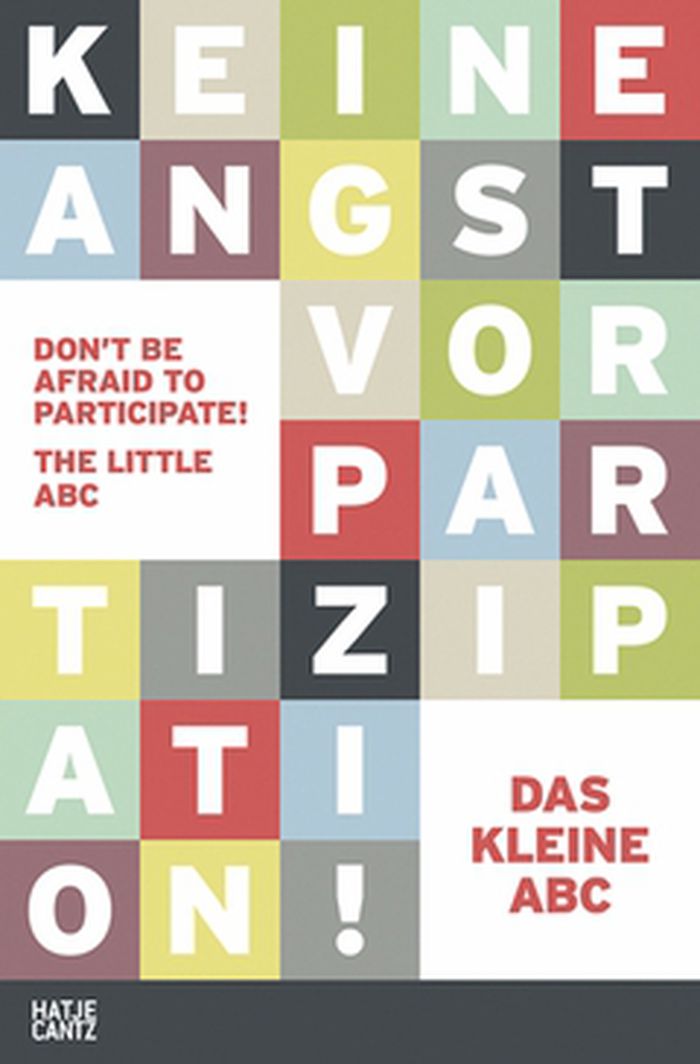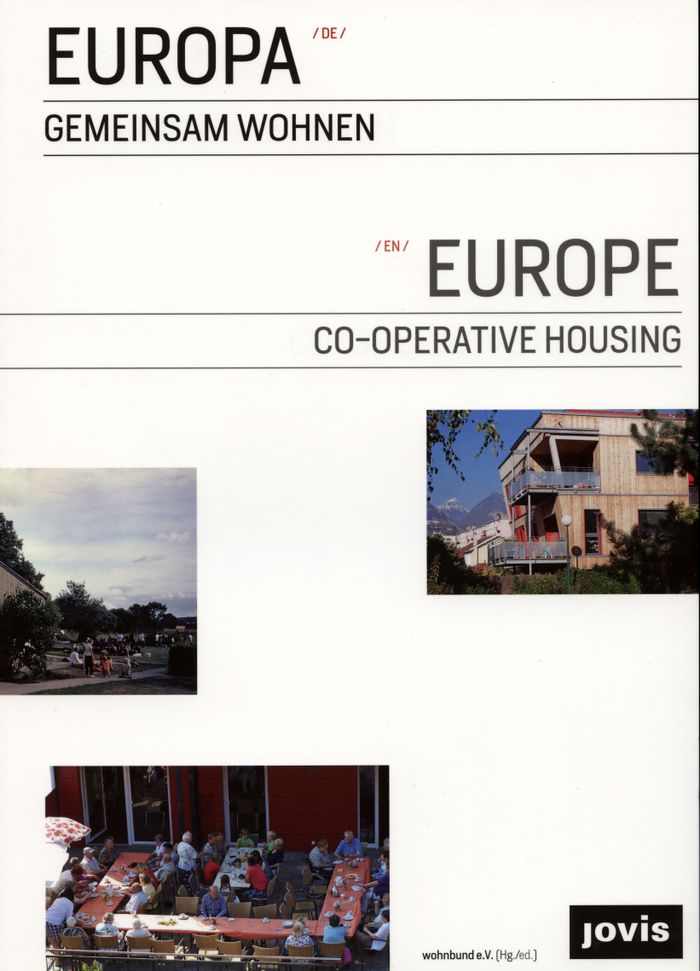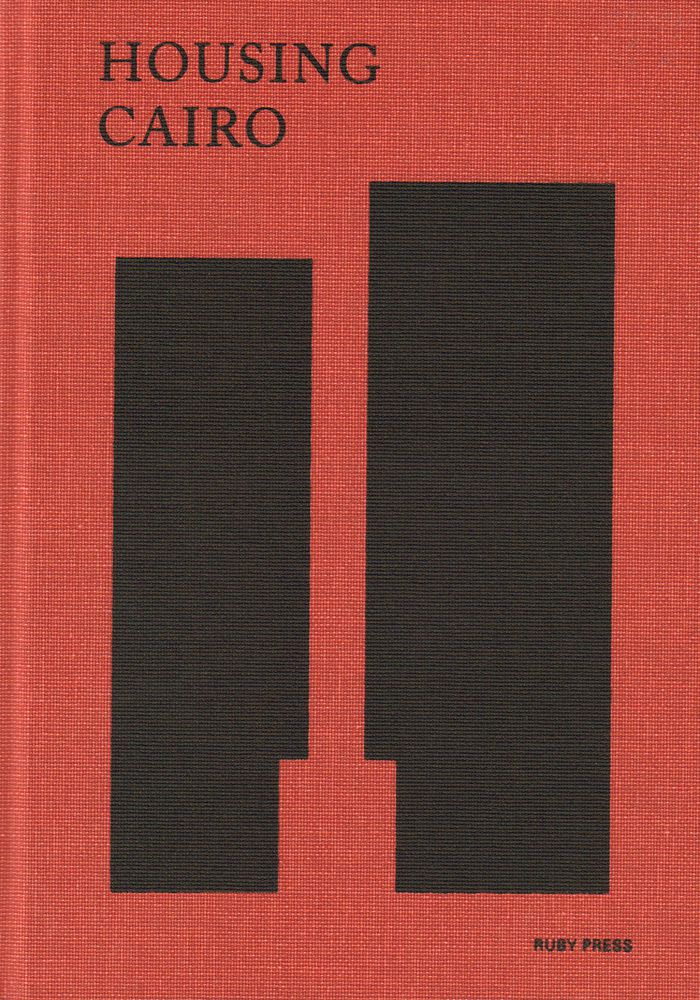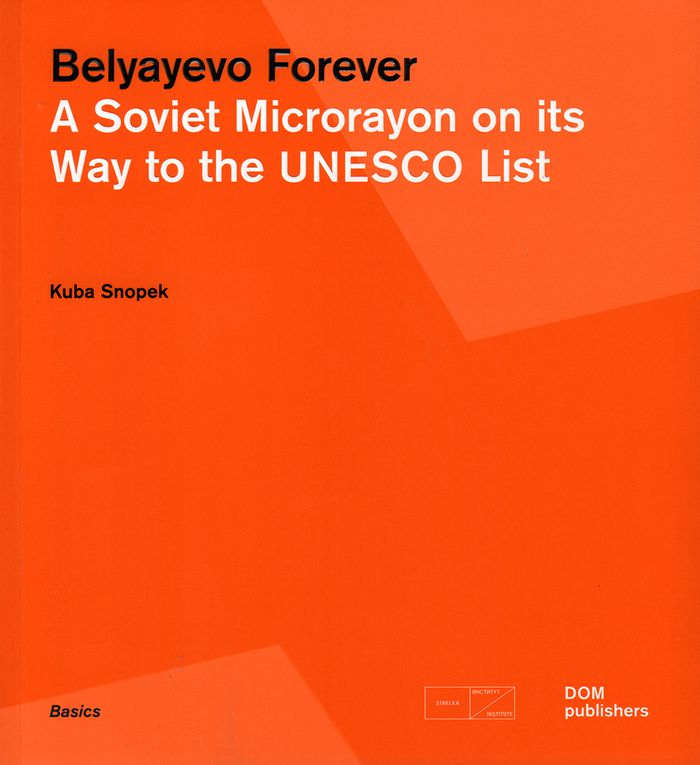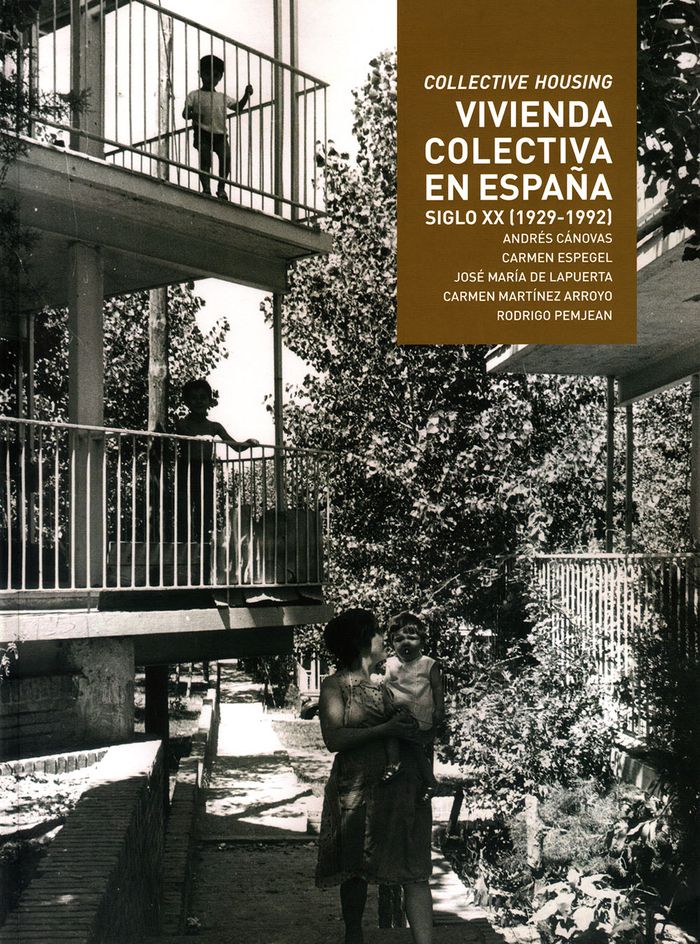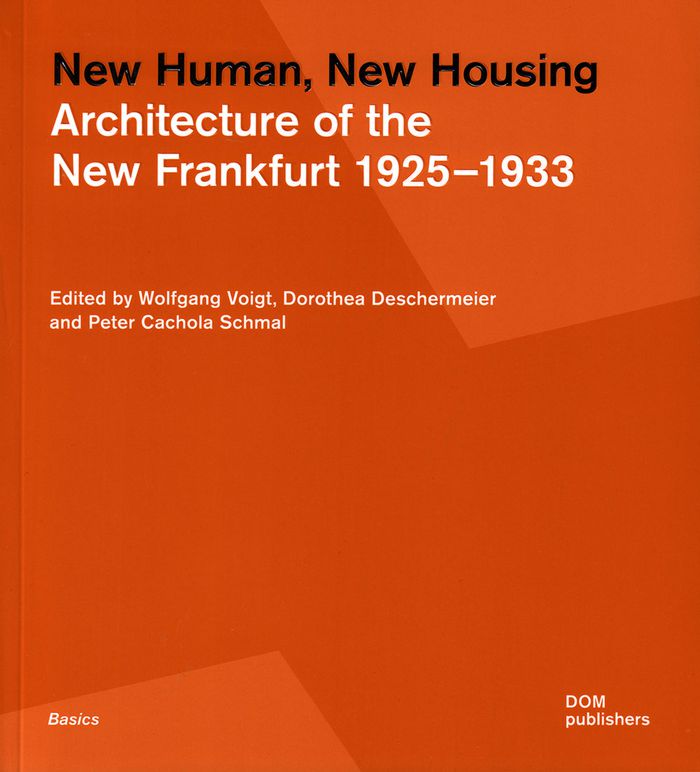$19.95
(available to order)
Summary:
The development of housing in the major European cities is facing a number of challenges in these days of rampant urbanization. This trend is coupled with a growing interest in home ownership and increasingly diverse domestic requirements as a result of demographic change. In response to these challenges, new building initiatives are being formed with the aim of meeting(...)
Don't be afraid to participate! The little ABC of communal planning and housing
Actions:
Price:
$19.95
(available to order)
Summary:
The development of housing in the major European cities is facing a number of challenges in these days of rampant urbanization. This trend is coupled with a growing interest in home ownership and increasingly diverse domestic requirements as a result of demographic change. In response to these challenges, new building initiatives are being formed with the aim of meeting individual requirements through self-determined forms of organization. These housing projects take a communal approach to both the planning process and later day-to-day living. From A for Architect to Z for Zoning, this book provides a brief and informative overview of all the key terms describing communal planning and living.
Collective Housing
Europe: co-operative housing
$39.50
(available to order)
Summary:
This publication provides insight into communal living in 11 European countries, focusing on social concepts, architectural details and funding schemes. Exemplary residential projects from Austria, Switzerland, the Netherlands, France, Great Britain, the Czech Republic, Denmark, Sweden, Norway, Finland and Germany are included.
Europe: co-operative housing
Actions:
Price:
$39.50
(available to order)
Summary:
This publication provides insight into communal living in 11 European countries, focusing on social concepts, architectural details and funding schemes. Exemplary residential projects from Austria, Switzerland, the Netherlands, France, Great Britain, the Czech Republic, Denmark, Sweden, Norway, Finland and Germany are included.
Collective Housing
$73.95
(available to order)
Summary:
This publication presents a review of projects built between 2013 and 2016, to which an anatomical dissection of the elements constituting their form has been applied. It offers an integral vision of each work, from its implementation in the territory to the breakdown of its typologies, and continues along the line of inquiry first taken with ‘Why Density?’, developing(...)
Form & data: collective housing projects : an anatomical review
Actions:
Price:
$73.95
(available to order)
Summary:
This publication presents a review of projects built between 2013 and 2016, to which an anatomical dissection of the elements constituting their form has been applied. It offers an integral vision of each work, from its implementation in the territory to the breakdown of its typologies, and continues along the line of inquiry first taken with ‘Why Density?’, developing the concepts on building the dense city expressed therein, this time with new projects.
Collective Housing
$78.50
(available to order)
Summary:
Home to 20 million people and still growing, Greater Cairo mirrors the global phenomenon of unplanned urban growth. Approximately 60 percent of the population of Africa’s biggest city lives in so-called informal housing, typically five-to-ten-story concrete-and-brick-infill structures built without permits in the desert or on former agricultural land. 'Housing Cairo: The(...)
Housing Cairo: the informal response
Actions:
Price:
$78.50
(available to order)
Summary:
Home to 20 million people and still growing, Greater Cairo mirrors the global phenomenon of unplanned urban growth. Approximately 60 percent of the population of Africa’s biggest city lives in so-called informal housing, typically five-to-ten-story concrete-and-brick-infill structures built without permits in the desert or on former agricultural land. 'Housing Cairo: The Informal Response' illuminates the architecture of informality and its mechanisms of production through a series of theoretical essays and architectural design proposals. Central to the project is a re-examination of the concept of “informality” itself and its often negative connotations.
Collective Housing
$49.95
(available to order)
Summary:
Sprawling beneath the Acropolis, modern Athens is commonly viewed in negative terms: congested, ugly and monotonous. A Mediterranean version of "informal" urbanism prevalent throughout the so-called developing world, ''Builders, Housewives and the Construction of Modern Athens'' reassesses the explosive growth of post-war Athens through its most distinctive building type,(...)
Builders, housewives, and the construction of modern Athens
Actions:
Price:
$49.95
(available to order)
Summary:
Sprawling beneath the Acropolis, modern Athens is commonly viewed in negative terms: congested, ugly and monotonous. A Mediterranean version of "informal" urbanism prevalent throughout the so-called developing world, ''Builders, Housewives and the Construction of Modern Athens'' reassesses the explosive growth of post-war Athens through its most distinctive building type, the polykatoikia, a small-scale multi-storey apartment block (from poly meaning "multiple" and oikos meaning "house"). Theocharopoulou re-evaluates the polykatoikia as a low-tech, easily constructible innovation that stimulated the post-war urban economy, triggering the city's social mid-twentieth century transformation, enabling the migrants who poured into Athens to become urban citizens, aspiring to a modern life. The interiors of the polykatoikia apartments reflect a desire for modernity as marketed to housewives through film and magazines. Regular builders became unlikely allies in designing these polykatoikia interiors, enabling inhabitants to exert agency over their daily lives ?and the shape of the post-war city.
Collective Housing
$52.95
(available to order)
Summary:
Preservation is ordinarily reserved for architecture that is unique. So how would we go about preserving buildings that are utterly generic? Such is the case with Belyayevo, an ordinary residential district in Moscow. Belyayevo is a typical microrayon – the standardised neighbourhood system that successive Soviet regimes laid out across the USSR in what was the most(...)
January 2016
Belyayevo forever: a Soviet microrayon on its way to the UNESCO list
Actions:
Price:
$52.95
(available to order)
Summary:
Preservation is ordinarily reserved for architecture that is unique. So how would we go about preserving buildings that are utterly generic? Such is the case with Belyayevo, an ordinary residential district in Moscow. Belyayevo is a typical microrayon – the standardised neighbourhood system that successive Soviet regimes laid out across the USSR in what was the most expansive programme of industrialised construction the world has ever seen. Belyayevo’s buildings, and the desolate spaces between them, are identical to thousands of others, but is it different? Kuba Snopek argues that it is. Home to many of the artists of the Moscow Conceptualism school, the place was written into the character of their art. Snopek argues that this intangible heritage is the key to saving a neighbourhood many feel has had its day. But as Russia comes to terms with ist Soviet legacy, will such arguments fall on deaf ears?
$54.00
(available to order)
Summary:
This book contains a selection of 83 collective housing works carried out in Spain between 1929 and 1992. It offers a detailed version of the residence projected in Spain between the Barcelona International Exhibition of 1929 and the Universal Exhibition of Seville in 1992. Two particularly significant dates, two points of inflection in architectural thought: the(...)
Collective housing / Vivienda collectiva en Espana
Actions:
Price:
$54.00
(available to order)
Summary:
This book contains a selection of 83 collective housing works carried out in Spain between 1929 and 1992. It offers a detailed version of the residence projected in Spain between the Barcelona International Exhibition of 1929 and the Universal Exhibition of Seville in 1992. Two particularly significant dates, two points of inflection in architectural thought: the enthronement and the epilogue of modernity. It contains plans of all buildings redrawn and with different scales depending on whether it is the urban implementation, the definition of the block or the description of the types, with photos of the time and cards with the main data of each project and its Author. The research process reconstructs the evolution of the project to extract its main values as a tool for the city and contemporary housing.
Collective Housing
$39.95
(available to order)
Summary:
This book chronicles a 10-year study conducted by architect, educator and urban planner Ana Rosa Chagas Cavalcanti, in which she studies the informal settlements of underprivileged communities in Brazil by inhabiting the spaces herself. This research underscores labor as the key factor determining the nature of such spaces.
Housing shaped by labour: the architecture of scarcity in informal settlements
Actions:
Price:
$39.95
(available to order)
Summary:
This book chronicles a 10-year study conducted by architect, educator and urban planner Ana Rosa Chagas Cavalcanti, in which she studies the informal settlements of underprivileged communities in Brazil by inhabiting the spaces herself. This research underscores labor as the key factor determining the nature of such spaces.
Collective Housing
$55.00
(available to order)
Summary:
Using the case study of Moravia, Colombia, this book presents an alternative approach to urban planning for similar neighborhoods, focusing largely on the participation of local residents. Essays and international examples of this method contextualize the Moravia project.
Collective Housing
March 2019
Moravia manifesto: coding strategies for informal neighbourhoods
Actions:
Price:
$55.00
(available to order)
Summary:
Using the case study of Moravia, Colombia, this book presents an alternative approach to urban planning for similar neighborhoods, focusing largely on the participation of local residents. Essays and international examples of this method contextualize the Moravia project.
Collective Housing
$53.50
(available to order)
Summary:
In the 1920s, an unprecedented program of architectural and cultural renewal was established in the German city of Frankfurt am Main. This scheme became inscribed in cultural history under the name ''The New Frankfurt.'' As part of the housing and urban development initiative decided in 1925, more than 10,000 new residential units were planned. The Building Ministry’s(...)
July 2019
New human, new housing: architecture of the New Frankfurt 1925-1933
Actions:
Price:
$53.50
(available to order)
Summary:
In the 1920s, an unprecedented program of architectural and cultural renewal was established in the German city of Frankfurt am Main. This scheme became inscribed in cultural history under the name ''The New Frankfurt.'' As part of the housing and urban development initiative decided in 1925, more than 10,000 new residential units were planned. The Building Ministry’s architects, recruited from home and abroad, created pioneering work in many areas. Examples include the typification of family-oriented flats, plans for affordable apartments for those on low incomes, the first standard kitchen, the industrial prefabrication of building shells, the construction of schools designed around children’s needs, and integrated urban and green planning. In this book, four essays delve into the cultural background of the scheme and provide illuminating insights into the context of the work of its many actors.
